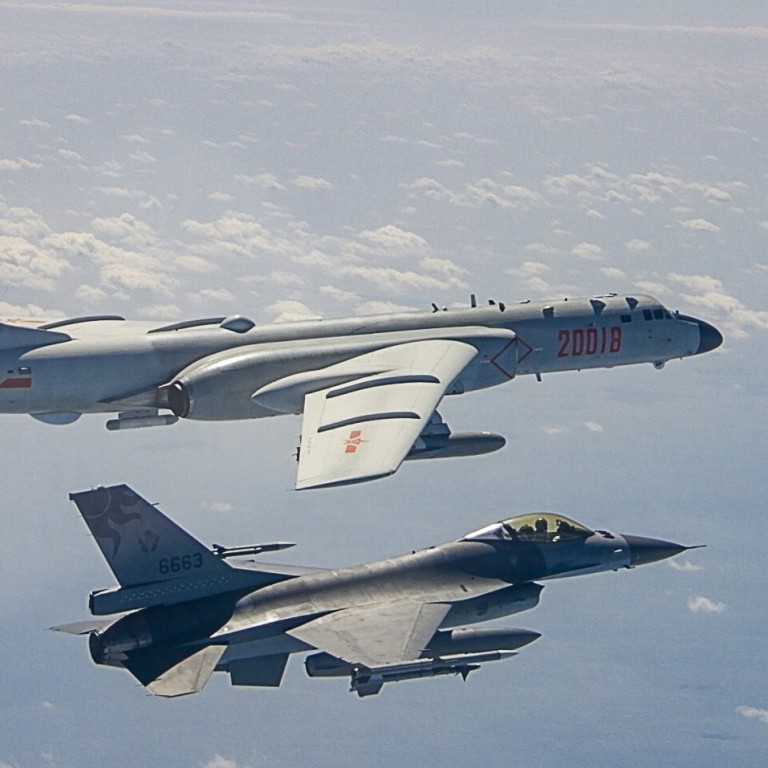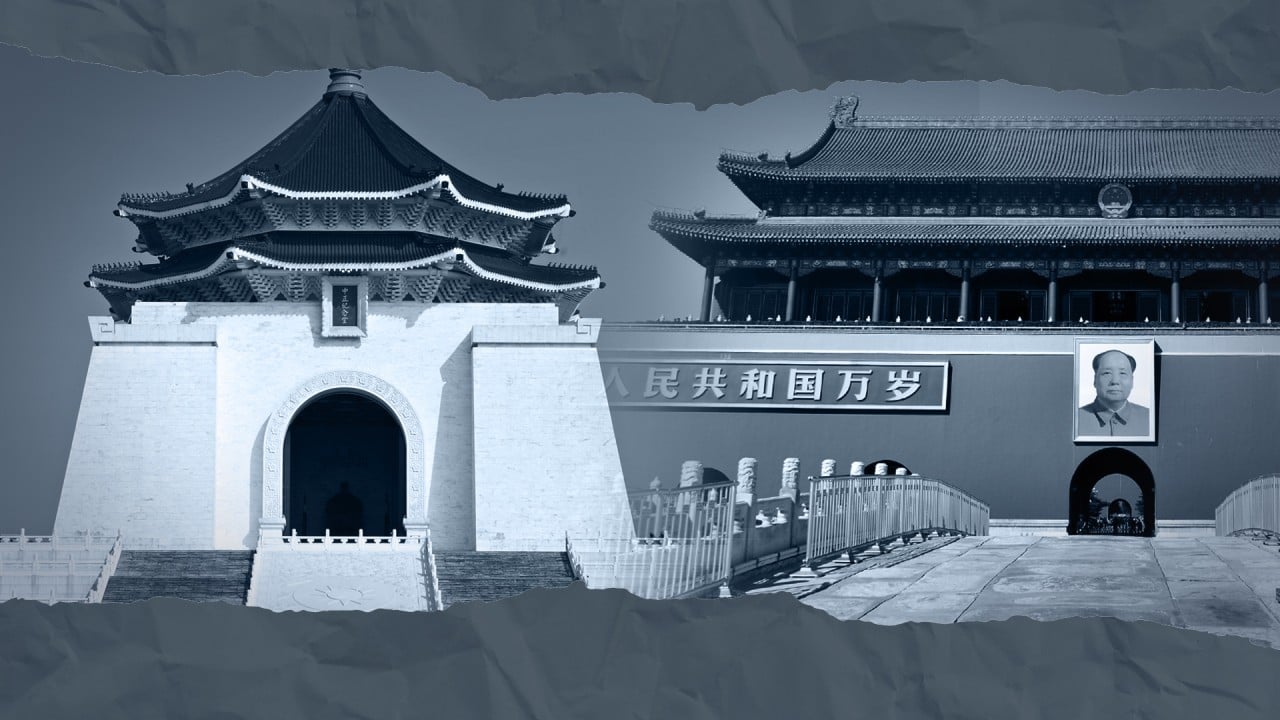
PLA warplanes made a record 380 incursions into Taiwan’s airspace in 2020, report says
- Chinese air force entered island’s ADIZ on 91 days from January to November, according to Taipei-based think tank
- Analysts say strategy is more about sending a message to the US and the world than an attempt to wear down Taiwanese military and public
Beijing made a record number of incursions into Taiwan’s air defence identification zone last year, but analysts say the hawkish strategy is more a signal to the world than a threat to the island’s resolve.
The Chinese air force flew over 380 sorties that entered the island’s ADIZ on a record 91 days from January to November, according to a Taiwanese government-funded report released last week by the Taipei-based Institute for National Defence and Security Research.
“2020 was an extremely busy and compact year for the PLA [People’s Liberation Army],” the report said. “The continuous deterioration of US-China relations and the warming of Taiwan-US relations have further affected the trilateral relationship between the United States, China and Taiwan, causing the PLA to significantly increase its military activities in the Taiwan Strait.”
Shih Shun-wen, a spokesman for Taiwan’s defence ministry, on Tuesday said the incursions “pose a threat to regional and our national security”.
The PLA aircraft targeted the area “to test our military’s response, to exert pressure on our aerial defence and to squeeze the aerial space for our activities”, Shih added.

10:22
Why has the relationship between the Chinese mainland and Taiwan taken a turn for the worse?
An ADIZ is the airspace above and surrounding a territory in which it will seek to identify and control civilian aircraft. Although they are declared unilaterally and are not upheld by international law, flying military aircraft into another territory’s ADIZ is generally considered an act of aggression.
“The intensity of military intimidation against Taiwan has reached its highest point in nearly 20 years,” said the report.
It said Taiwan’s air force had dispatched 2,972 missions to monitor its ADIZ in 2020, costing a total of NT$25.5 billion (US$907.5 million).
“I don’t think Beijing is trying to wear down Taiwan’s air force,” said Zhang Baohui, from Lingnan University’s department of political science. “More likely its air activities seek to signal resolve and enhance deterrence.”
Taiwan under psychological attack as Chinese warplanes cross median line, analysts say
In 2020, the US sent high-ranking government officials to Taiwan and authorised the sale of weapons to the self-ruled island. Zhang said Beijing was worried that the Donald Trump administration’s efforts to upgrade relations with Taiwan might embolden it to move towards declaring independence.

00:48
Military drills in Taiwan Strait are ‘necessary’ as US envoy Keith Krach visits island, China says
He said the ADIZ incursions were a new and aggressive way for Beijing to register its displeasure.
“Now Beijing is pushing its envelope for the first time actually,” he said, noting that Beijing wanted Taipei to recognise the 1992 consensus stating that the two sides agree that there is only one China.
“There is a warning to the incoming administration not to push too far in upgrading relations with Taiwan,” he said.
According to the report, nearly 90 per cent of incursions in 2020 took place in the southwest of Taiwan’s ADIZ. In previous years most were in the western Pacific. It said the shift in focus could be due to Beijing’s efforts to create “invisible pressure” on the defences of Taiwanese-controlled islands in the South China Sea.
The report noted that most aircraft sent on the incursions were anti-submarine and reconnaissance planes, and the flights allowed Beijing to assess Taiwanese and US defences in the region.

01:48
Taiwan launches domestically produced ‘carrier killer’ corvette to defend against mainland China
According to Chong Ja Ian, from National University of Singapore’s department of political science, although the incursions had hardened Taiwanese resolve against Beijing, they were a “low cost, highly flexible and highly visible” way for China to signal its regional ambitions.
He said that, beyond aircraft wear and tear, the effect on Taiwan’s military was limited as air forces needed to send fighter jets up regularly to maintain combat readiness.
“It shows that China is a major power and this is its area,” he added.
He said Beijing may also be trying to lull Taiwan into a false sense of security. “If the Taiwan side sees PLA aircraft appearing regularly, they may be less wary, less on their guard, which would put the PLA at an advantage if it starts off any action,” he said.
Is Beijing trying to exhaust Taiwan’s air force?
The report noted that the economic and political means available to China to force its will on Taiwan had become more limited in the past year as Taiwanese and global public opinion hardened against it. Military intimidation, it said, “has become the simplest and most convenient method the Chinese Communist Party can use”.
Analysts agreed that China’s military threats were likely to continue this year but escalation into conflict was highly unlikely.
Richard Bitzinger, a senior fellow at the S. Rajaratnam School of International Studies at Nanyang Technological University in Singapore, said the chances of Beijing pushing too hard and triggering a conflict were a “long shot” but that pressure would remain.
“I think we should expect that China will continue to increase pressure on Taiwan, short of military action,” he said. “China is on a roll, so to speak, when it comes to regional aggression, and Taiwan is very high – perhaps highest – on its list.”

